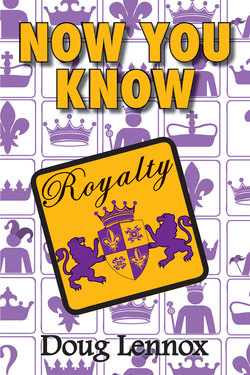Читать книгу Now You Know Royalty - Doug Lennox - Страница 13
На сайте Литреса книга снята с продажи.
ОглавлениеWhat are the most common misconceptions about monarchy?
1) That Canada has ties with the monarchy. Canada does not just have ties, it is a monarchy itself. 2) That Canadians send money to Queen Elizabeth II in England. Her Majesty receives no money whatever from Canadians and never has. Expenses entailed by the monarchy are all connected with public duties and ceremonies such as tours and executive acts. 3) That Her Majesty represents the Crown. It is the other way round. A symbol represents a person, not vice versa. 4) That the king gave up the exercise of all royal powers in Canada by the Letters Patent of 1947 reconstituting the office of governor general. The St. Laurent/Diefenbaker governments got the queen to open Parliament in 1957 as did the Trudeau government in 1977. 5) That the Crown is not only the monarch but “a team of governors.” The Crown is defined by the Interpretation Act as being Her Majesty the Queen or His Majesty the King as the case may be. The “team of governors” is a political science description of how the Crown works and has no basis in law.
Countries Elizabeth II Crowned Queen of in 1953
• Australia
• Canada
• Ceylon
• New Zealand
• Pakistan
• South Africa
• United Kingdom
Is the idea that “kings reign but do not rule” a fiction?
This expression is used to convey the fact that while laws are enacted in the name of the king/queen (reigns), the political decisions behind them are made by ministers (rules). In most monarchies, including Commonwealth ones, the distinction is not written down in law. Linguistically the two words mean the same thing, as well, but political convention has given them a distinction that is now readily understood.
Is constitutional monarchy only an emasculated form of real monarchy?
People have the idea that all kings were originally absolute. That is incorrect. Medieval monarchs for the most part possessed no standing army, bureaucracy, or adequate revenue. They had power only over the king’s personal domain; that is, the lands he himself owned. Their authority over the whole kingdom was recognized, but because it was not based on brute power, their will could not be everywhere enforced. While there were many cases of monarchs abusing power, the concept of the absolute king was both classical and renaissance, and when constitutional monarchy evolved in the 17th through the 20th centuries it was a fulfillment of earlier kingship, not a repudiation or diminution of it. Constitutional monarchy is an advanced version of medieval kingship. Many of its attributes, such as Parliament, habeas corpus, and trial by jury, were medieval innovations.
Current Realms of Queen Elizabeth II
• Antigua and Barbuda
• Australia
• Bahamas
• Barbados
• Belize
• Canada
• Grenada
• Jamaica
• New Zealand
• Papua New Guinea
• St. Christopher and Nevis
• St.Lucia
• St. Vincent and the Grenadines
• Solomon Islands
• Tuvalu
• United Kingdom of Great Britain and Northern Ireland
How did we come to send people to represent us in Parliament?
Between 1275 and 1307, King Edward I of England established the practice of summoning knights from the counties and men from the towns to his High Court of Parliament. These knights and townsmen were to discuss the affairs of the kingdom with the great nobles, who alone had previously met with the king in parliament. The knights and townsmen represented the “communities” of the kingdom — hence the term “House of Commons.” King Edward I’s Parliament of 1295, with its lords, knights, and townsmen, is known to history as the “Model Parliament,” and after 1307, Parliament organized in this way became the distinctive feature of English politics. Ever since, the representation of communities has been one of our chief constitutional principles. It remained only to expand the actual number of people who chose these members of Parliament over succeeding centuries, until in the 20th century universal suffrage was introduced.
Who make up the Parliament of Canada?
The Parliament of Canada consists of the reigning queen or king, the Senate, and the House of Commons. It was created in 1867 by the Constitution Act 1867 (formerly the British North America Act 1867), Section 17.
Quickies
Did you know …
• that Canada is, geographically, the largest monarchy in the world?
What are the central gates of Parliament Hill in Ottawa called?
They are called the Queen’s Gates and face onto Wellington Street. They are only opened for the arrival of the sovereign or the representative of the sovereign, generally at the opening of Parliament for the entrance of the state landau and escort.
What is royal assent?
